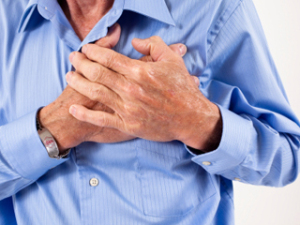by
Olga Deshchenko, DOTmed News Reporter | November 16, 2010
The U.S. Food and Drug Administration will launch a new program to develop safer and more effective external defibrillators, the agency announced Monday.
The announcement comes on the heels of a study indicating the devices are little help to cardiac arrest patients in hospitals.
The External Defibrillator Improvement Initiative by the agency's Center for Devices and Radiological Health will focus on improving the safety of the devices through better design and manufacturing practices.



Ad Statistics
Times Displayed: 365845
Times Visited: 7102 Quality remanufactured Certified Centrifuges at Great prices! Fully warranted and backed by a company you can trust! Call or click for a free quote today! www.Centrifugestore.com 800-457-7576
Nearly 300,000 Americans suffer from sudden cardiac arrest on an annual basis. To quickly restore normal heart rhythms, automated external defibrillators are becoming more prevalent in airports, office buildings and other public settings.
However, safety and effectiveness concerns are not uncommon.
The CDRH has received more than 28,000 medical device reports associated with the failure of external defibrillators in the past five years and manufacturers have "conducted dozens of recalls involving hundreds of thousands of the devices," according to the FDA.
A study published Monday in the Journal of the American Medical Association found that the use of AEDs in patients with in-hospital cardiac arrest is not associated with improved survival.
Researchers looked into patient data of 11,695 hospitalized patients with cardiac arrests between Jan. 1, 2000 and Aug. 26, 2008 at more than 200 hospitals in the U.S. that got an AED unit. The devices were used on 38.6 percent of the studied patient population.
Overall, 2,117 patients survived to hospital discharge. Patients whom AEDs were used on had a survival rate of 16.3 percent, while those who went without the device had a survival rate of 19.3 percent, according to the study.
"The lower adjusted survival associated with AED use was seen regardless of whether the cardiac arrest occurred in a monitored or non-monitored hospital ward," the study's authors wrote.
According to the FDA, many issues with external defibrillators can be prevented and "include engineering design and manufacturing practices related to the adequate control of components bought from other suppliers."
CDRH plans to release a white paper describing the actions it's taking as a part of the initiative.
The program will officially launch on Dec. 15-16 with a public meeting at the FDA's Silver Spring, Md.-based headquarters. The meeting will bring industry professionals and other defibrillator stakeholders to discuss ways to improve the safety of the devices.

